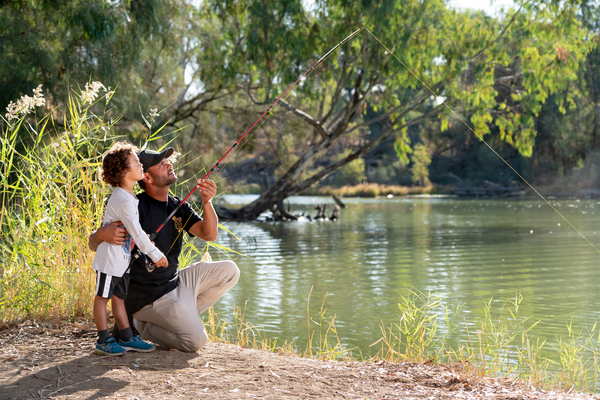Communities across Victoria will see the flow-on benefits of water for the environment this year with many of the state’s rivers and wetlands set to receive environmental flows.
The Victorian Environmental Water Holder (VEWH) today launched its Seasonal Watering Plan 2021-2022. The launch of the plan also marks the 10 year anniversary of the VEWH’s establishment.
Backed by a wealth of knowledge from contributors across the state, the plan provides a detailed outline of Victoria’s commitment to delivering the environmental watering program under different climate scenarios: drought, dry, average and wet.
Planning for the upcoming watering season comes on the back of last year's La Nina weather pattern which provided much needed rainfall in the Gippsland, central and northern regions of Victoria, resulting in good inflows to many reservoirs, some minor reservoir spills and unregulated flows in several river systems.
In western Victoria the La Nina had less effect; water storages remained low and there was a heavy reliance on the available environmental water allocations to provide flows in the Wimmera and Glenelg systems. The need for flexibility and a seasonably adaptive approach to planning continues to be important as the effects of climate change creates uncertain seasonal conditions.
VEWH Co-CEO Paulo Lay said that water for the environment is a critical aspect of waterway management in Victoria, which draws off the strong collaborative relationships with our delivery partners.
“In 2021-22, environmental flows are planned for 19 major river and wetland systems across Victoria, and will directly benefit over 100 species, one third of which are threatened,” he said.
“To help ensure we are able to achieve positive outcomes with this precious resource collaborative planning for its management and use across the state is crucial.”
“Water for the environment protects river health by improving water quality and providing vital habitat for plants and animals, such as platypus, native fish and waterbirds.”
The plan is underpinned by scientific understanding, Traditional Ecological Knowledge from Traditional Owner groups, and local knowledge from across all parts of Victoria.
VEWH Co-CEO Dr Sarina Loo said that the planned deliveries of water for the environment in 2020-21 produced environmental outcomes, Traditional Owner outcomes and social and recreational outcomes.
“Last year, environmental flows supported plants and animals including the iconic platypus and Murray cod,” she said.
“In addition, at least 10 environmental watering activities were delivered in partnership with Traditional Owners whose knowledge is integral to the management of water for the environment.
Working together with Traditional Owners helps to ensure that their cultural heritage is protected during watering events and that the water needs of important cultural values like food and medicinal plant species, are supported through the timing and duration of planned watering actions”.
Lockdowns and restrictions across much of Victoria during 2020-21 resulted in the social and recreational values of our rivers and wetlands become increasingly important.
“Families, friends and individuals seeking fresh air and open spaces took advantage of walking, running, riding and picnicking at many of the rivers and wetlands that receive environmental flows” said Dr Loo.
The Seasonal Watering Plan 2021-22 demonstrates the ongoing commitment of the VEWH and our partners - waterway managers, Traditional Owners, storage managers, land managers, environmental water holders, scientists and communities – to achieve the best possible outcomes from water for the environment.
The Victorian Environmental Water Holder’s Seasonal Watering Plan 2021-22 can be found here.

Fishing at Merbein Common, by David Sickerdick provided by Mallee CMA